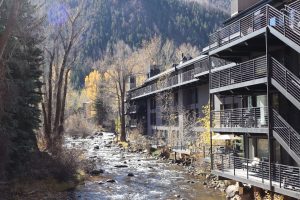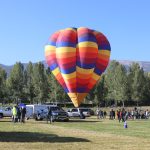Saddle Sore: Two cultures, worlds apart

Tony Vagneur/Courtesy photo
There are things one sees: remnants of old, almost indecipherable but suspiciously marked trails through the timber, maybe from one ridge to a clearing in an unusual spot or a remarkable overlook. Remains of what might have been hunting trails, used by Ute Indians, relics that would be forever lost from history if not for generations before me pointing them out as we passed by.
We were looking for cattle, headed for Bear Creek, when he offered to show me another route. “You know, there’s a different way to get there,” he said, and we struggled along a trail that hadn’t been used in forever. “My dad showed me this trail — learned it from his dad,” he added, and before long, we came out on a beautiful overlook, high above the Fryingpan Valley.
The other night, Skylar Lomahaftewa, a Northern Ute Tribal Member and educator with the Aspen Historical Society, walked a group of us through some Ute history and some of the differences between Ute and white cultures. Perhaps you were there and picked up on what Skylar had to say — he touched on a lot of things, but the most striking, and maybe the most obvious, was this: As a Native today, whose ancestors lived here millennia before we white eyes arrived, he and other Utes now live in a world so tightly tied to Europe.
We came into the Ute homeland carrying all the baggage of European civilization (and yes, some good, too) and expected the Utes to understand what we were saying. Two cultures, worlds apart.
Think about the young Christian missionary, certain in his faith, trying to convert the Utes — singing praises of the Christian God to mostly polite listeners whose quiet response, in their own way, was, “Yes, that is your god. That is not ours.”
Utes believed the Creator — the Great Spirit, by whatever name — placed them here, in Colorado, Utah, and New Mexico, and that they had always been here. The idea of Adam and Eve was foreign.
Utes were part of nature, and all of nature lived together in the great vision of sky, earth, forests, and rivers. In a hunting culture, they asked permission from the animals to be killed; the creatures were accorded the deepest respect.
In the story told by the missionary, Adam and Eve’s act of eating from the tree of knowledge led to banishment from the Garden of Eden. To a Native, whose very self was intertwined with nature, the Garden — and the God who cast humans out of it — seemed upside down. Banished from nature? Bad things happened there. Welcome to our world, said the settlers.
Closer to home, the two philosophies — hunters and settlers — were miles apart. Hunters, powerful in their world, relied on skill and a close relationship with the hunted. No two days the same. Hides and horses were their capital, their wealth, their strength. The world of nature itself was, in a sense, their everlasting life.
Settlers, many devoutly religious, lived by rules handed down by men who claimed to speak for the other world. Their capital was in coins, goods, and paper, earned by staying put, plowing the ground, and raising crops. And the one thing they couldn’t control — the weather — could be their undoing.
Nathan Meeker, the man most responsible for the end of Ute freedom in Colorado, just couldn’t understand the Ute way of believing and living. And in the end, it cost the Utes their freedom.
And maybe, standing on an old trail far above the valley, we can still glimpse what they saw, winding far below.
For further information about the Ute Indians, be advised that the Aspen Historical Society has two concurrent exhibits in the Archives Building: “The History Colorado Visiting Exhibit” explains how the Ute Indians have used science, technology, engineering, and math to survive and thrive in the Rocky Mountains through interactives, short films, maps, images, and stories from Ute elders and youth.
Displayed alongside the visiting exhibit, AHS’ own traveling exhibit “Seasons of the Nuche: Transitions of the Ute People” explores the past and present of the Ute people locally and throughout the West. This modular traveling exhibit was curated with input from Northern Ute tribal members and is available to regional organizations to display in their community at no cost thanks to support from The Memnosyne Institute and the Louis and Harold Price Foundation.
And don’t forget, my friend Skylar Lomahaftewa will host Ute/Indigenous Culture Conversations on Tuesdays at 11 a.m. and Wednesdays at 3 p.m. to celebrate and share his perspective on Ute and Indigenous history and culture.
Tony Vagneur writes here on Saturdays and welcomes your comments at ajv@sopris.net.
Tony Vagneur writes here on Saturdays and welcomes your comments at ajv@sopris.net.
Keeping up with The Times
The Aspen Times has always been more than ink on paper — it’s a conversation with the community we love.









